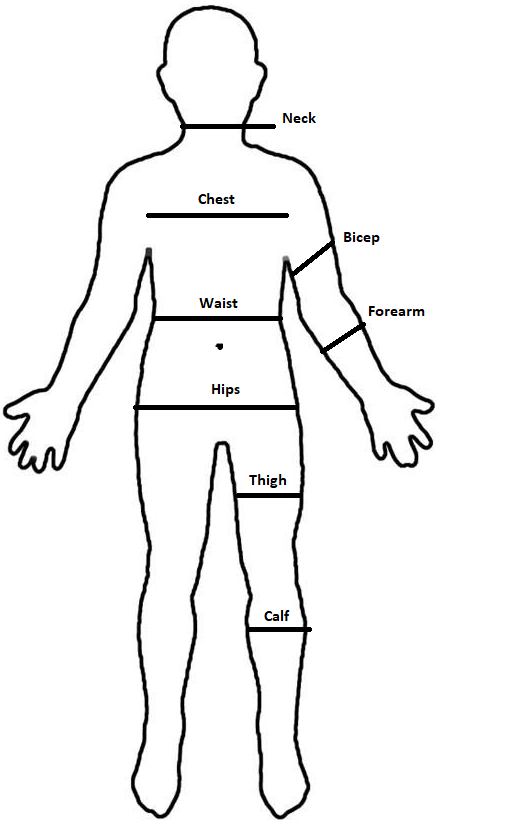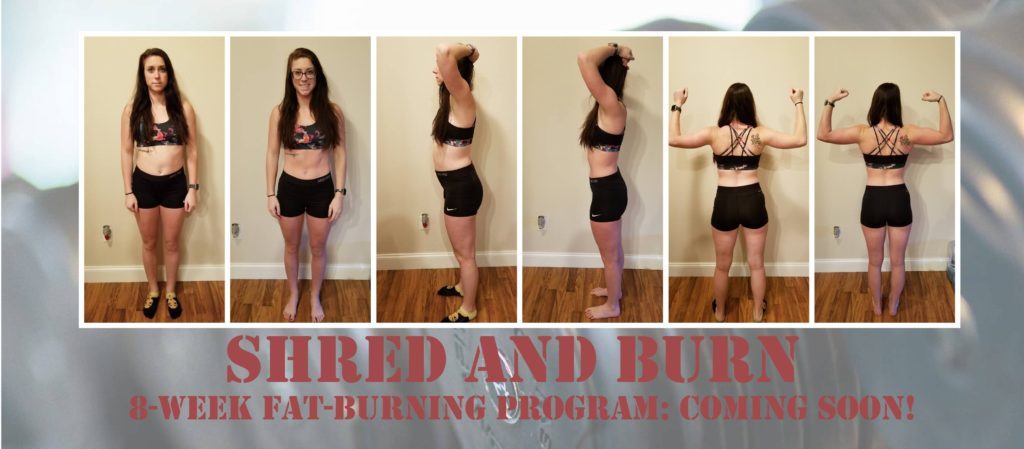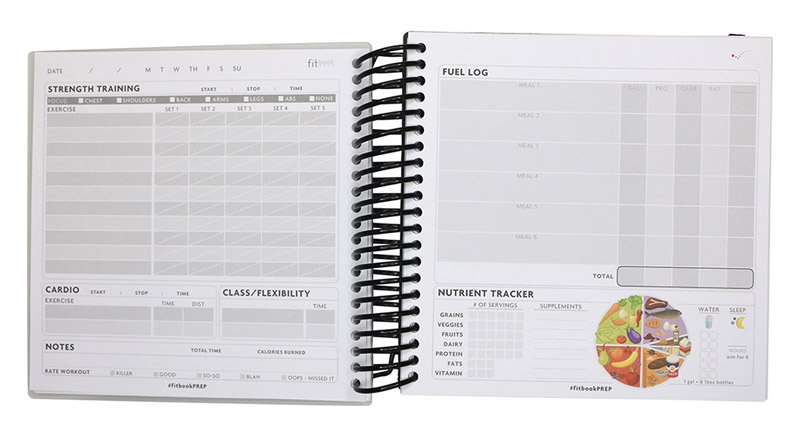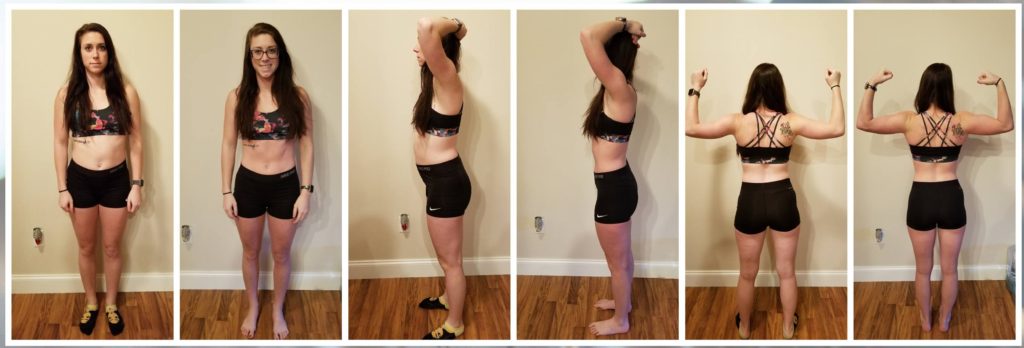Whether you’re just starting on your fitness goals, or you’ve been crushin’ goals for a while, I personally believe it is very important to track your progress. Tracking personal progress is a great way to keep yourself motivated, hold yourself accountable, and even inspire others. It’s always great to be able to remember where you came from in times when you start to feel discouraged.
Changes in the body usually to start occur after about 4-6 weeks of consistent exercise and diet change. Many changes occur before this, but as far as composition goes, the body needs some time to show your awesome results. After working out for a week or 2, the mentally benefits start showing. Exercise can help with depression, anxiety, and stress. According to an article on Walden University’s website “Exercise is a scientifically proven mood booster, decreasing symptoms of both depression and anxiety. Physical activity kicks up endorphin levels, the body’s famous “feel good” chemical produced by the brain and spinal cord that produces feelings of happiness and euphoria.” You should also expect changes with your sleep. Exercise greatly helps people to get a good-night’s sleep. In the same article from Walden University, they talk about the impact exercise has on sleep. “Physical activity increases body temperature, which can have calming effects on the mind, leading to less sheep counting and more shuteye. Exercise also helps regulate your circadian rhythm, our bodies’ built-in alarm clock that controls when we feel tired and when we feel alert.”
Circumference Measurements
Circumference measurements are great for tracking progress. I suggest to take these measurements every 6-8 weeks in order to be able to see a change.
What are they?
Circumference measurements are taken with a measuring tape. You will take measurements at your neck, chest, waist, hips, right bicep and forearm, and right thigh and ankle. You may also do the left side for the arm and leg measurements, but since the right side is most commonly the dominant side, people usually stick to it for measuring.
Why?
Circumference measurements are very important for weight loss goals, and also muscle building goals. Often, when people begin working out, they get discouraged when they don’t see a change in the scale. What people don’t realize is that when you start exercising, your muscles retain more water which makes your weight a little higher than usual. You also are gaining muscle and losing fat, so it’s really hard to tell your progress from the scale. With circumference measurements you are able to see how many inches you’ve lost or gained on various part of your body. This is a great way to tell if you are tightening up and losing fat.
How?

The first step is to make sure you are wearing very thin clothing as you do not want to add extra inches. Next, it is important to be in front of a full-sized mirror, or have someone else do your measurements so that they are accurate. For all measurements you will be wrapping a measuring tape around a part of your body, so be sure to use a flexible measuring tape. You may record these numbers whenever is helpful for you. Some people use a computer software, other people use a notebook. Just be sure to keep track! I’ve included instructions from an article on Weight Loss Program’s website, along with some of my own tips.
Neck: Hold end of measuring tape in the center of your neck.
Chest: Measure around the largest part of your chest.
Waist: Measure at the narrowest point, approximately one inch above your belly button. I recommend putting 2 fingers above the belly button and measuring from that point.
Hips: Measure your hips around the largest part of your buttocks with your heels together.
Biceps: Measure midway between the top of your shoulder and elbow.
Forearm: Measure midway between your wrist and elbow.
Thigh: Stand with your legs slightly apart. Measure your upper leg where the circumference is largest.
Calf: Measure midway between your knee and ankle, at the largest part.
Progress Pictures
Progress pictures are great for motivation. Sometimes we forget how far we’ve come in our fitness journey and find it easy to get down on our self. When using progress pictures we are able to see even the smallest bit of change in our body. They also come in handy for a #TransformationTuesday or #ThrowbackThursday post! I really do recommend taking pictures often, you never know whose journey you could be inspiring!
What are they?
Progress pictures are just that…pictures of your progress. It could be gym selfies, meal prep, or pictures of your new PR, but today we are going to go over how to take great, full body, progress pictures.
Why?
It might not seem like it in the beginning, but you WILL want to know how far you’ve come once you start seeing progress. Every time you look in the mirror and think “Nothing is changing. I look the same” you will be able to look back to last month and see that you’re wrong! You look at yourself in the mirror every single day, so it’s hard for you to see the changes happening. What you need is to be able to look back to day 1 of your journey and realize how hard you’ve worked and how much progress you’ve made!
How?
Okay, so there are a lot of things to keep in mind when taking good progress pics. If you’re looking for how to take progress pics for a challenge or competition, I found a great resource on Beachbody.com.

- Be sure to use a full-sized mirror or have someone else take them for you.
- A swimsuit or form-sitting clothes are the best to wear so you can see the most of your body
- Do not manipulate these photos in any way. Stay relaxed and yourself in them. Don’t suck it in or push it out.
- Take them in the same clothes that you started in. This will cut out any doubts that there is progress. If you wear shorts for one picture and high-waisted leggings for the next it will be really difficult to validate the amount of progress made.
- Take them from multiple angles. I recommend the front angle, side angle, and back angle.
Lifting Journal
A lifting journal or gym diary are a GREAT way to keep yourself on track and be able to see how far you’ve come. I think it is awesome when you complete a new PR on a lift, or push yourself to do that extra rep. It’s important to track how you’re feeling during a workout and what exercises gave you trouble, that way you can see how you’ve progressed as you try these exercises later in your fitness journey.
What is it?
A lifting journal can be whatever you want it to be. There are so many pre-made ones out there online and in stores. A lifting journal is a place to write or type down your workouts, sets, reps, and weights. You can keep track of what exercises you are completing, how difficult they are for you, and any other notes you’d like to include. Usually there is a monthly calendar to schedule out your workouts, a weekly calendar to get specific about tasks that need to be done, and a day specific portion to write workouts and record food. A lifting journal is personalized to what the user needs. The planning guru in me just loves a good lifting journal, I cannot even count the number of planners I’ve had!
Why?
Unless you have a great memory of every exercise you’ve ever done and how much weight you did it at, a lifting journal of some sort is right for you. These are used to make sure you go up in weight, increase your reps, and see some progress! Without keeping track of your workouts it is possible to reverse your fitness journey by not pushing yourself as hard as you should.
How?
To use a lifting journal, all you have to do is write or type your workouts, take it to the gym, and track what you are doing. Simple as that. One of my favorite lifting journals is the Fitlosophy Fit Book. It is small enough to carry around the gym, has spots for your workouts and cardio, and you are also able to track your meals in it. There really are no other directions of how to do use a lifting journal. It’s completely up to you, which is why this is one of my favorite ways to track progress! The most important thing is to be honest with yourself when you’re filling it out. There’s no use lying about your food intake or the amount you lifted, it doesn’t do you any good!

No matter how you track your progress, just be sure to TRACK IT! In times of low motivation or self doubt, it is great to look back on where you started and how much progress you have made. It documents the journey of you, getting healthier, getting stronger, becoming the best version of you!
